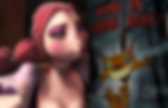

FedEx Bandwidth. Upcoming Quirky Products. Finally, A Bottle That Can Store Sound. The Odds. The Tetris Effect. 1. Computer Space When I was in second grade, my teacher sent a note home to my mother. I had recently been skipped ahead from first grade to second grade and the new teacher was worried about me. I was keeping up with the class fine, I was having no problem with that, she said in the note, but she was worried about me because all I would ever write or talk or draw about in class or in my journal or for homework were video games. They seemed to be the only thing that I thought about. She wondered whether maybe there might be something wrong with me for me to be so obsessed with games. In the opening scene of the film, a boy is wandering along an empty stretch of highway, the frame filled with waves of desert heat. "When [he] was born, in 1971, his steel blue eyes seemed crossed in an unusual way, drawing immediate concern from his parents.
I was born with a bad left eye. "His depth perception was poor. When she read the note, my mother wasn't too worried. 2. 3. Dr. Estimate Pi with Matches. Poe's Law.
Scholar explores mystery of the 'music-evoked frisson' Why are opera singers' voices so distinctive and powerful? Why can we pick them out, without the help of amplification, against the sound of more than 100 accompanying instruments? According to musicologist David Huron, we can do it because opera singers produce the bulk of their sound energy in the 3- to 4-kilohertz range. Humans are quite sensitive to this range, probably because it is also the range of a human scream. "When something scares the wits out of you," Huron said, you involuntarily raise the ventricular folds sitting on your vocal cords. "A major aspect of opera training involves bringing the ventricular folds under voluntary control" to produce this distinctive pitch. This finding is one of many pieces of evidence that Huron, a music professor at Ohio State University, has used to construct a theory of "music-evoked frisson"—the sensation of chills and gooseflesh that music sometimes provokes in listeners.
Why, then, is this sensation involved in such a pleasurable feeling?
The Hardest Logic Puzzle Ever. The Hardest Logic Puzzle Ever is a logic puzzle invented by American philosopher and logician George Boolos and published in The Harvard Review of Philosophy in 1996. A translation in Italian was published earlier in the newspaper La Repubblica, under the title L'indovinello più difficile del mondo.
The puzzle is inspired by Raymond Smullyan. It is stated as follows: Three gods A, B, and C are called, in no particular order, True, False, and Random. True always speaks truly, False always speaks falsely, but whether Random speaks truly or falsely is a completely random matter. Your task is to determine the identities of A, B, and C by asking three yes-no questions; each question must be put to exactly one god.
History[edit] The solution[edit] Boolos provided his solution in the same article in which he introduced the puzzle. Boolos' question was to ask A: Does da mean yes if and only if you are False, if and only if B is Random? Equivalently: If I asked you Q, would you say ja? See also[edit] Klein bottle. Structure of a three-dimensional Klein bottle In mathematics, the Klein bottle /ˈklaɪn/ is an example of a non-orientable surface; informally, it is a surface (a two-dimensional manifold) in which notions of left and right cannot be consistently defined.
Other related non-orientable objects include the Möbius strip and the real projective plane. Whereas a Möbius strip is a surface with boundary, a Klein bottle has no boundary (for comparison, a sphere is an orientable surface with no boundary). The Klein bottle was first described in 1882 by the German mathematician Felix Klein. It may have been originally named the Kleinsche Fläche ("Klein surface") and that this was incorrectly interpreted as Kleinsche Flasche ("Klein bottle"), which ultimately led to the adoption of this term in the German language as well.[1] Construction[edit] This square is a fundamental polygon of the Klein bottle.
By adding a fourth dimension to the three-dimensional space, the self-intersection can be eliminated. Online | Japanese Gravity Marimba Plays Bach In An Ancient Forest. Some Useful Condescending Phrases. Marijuana Soda Provides a High Without the Smoke.
You Are Not So Smart. A Computer That Knows When To Say “That’s What She Said” - Alex Knapp - Robot Overlords.